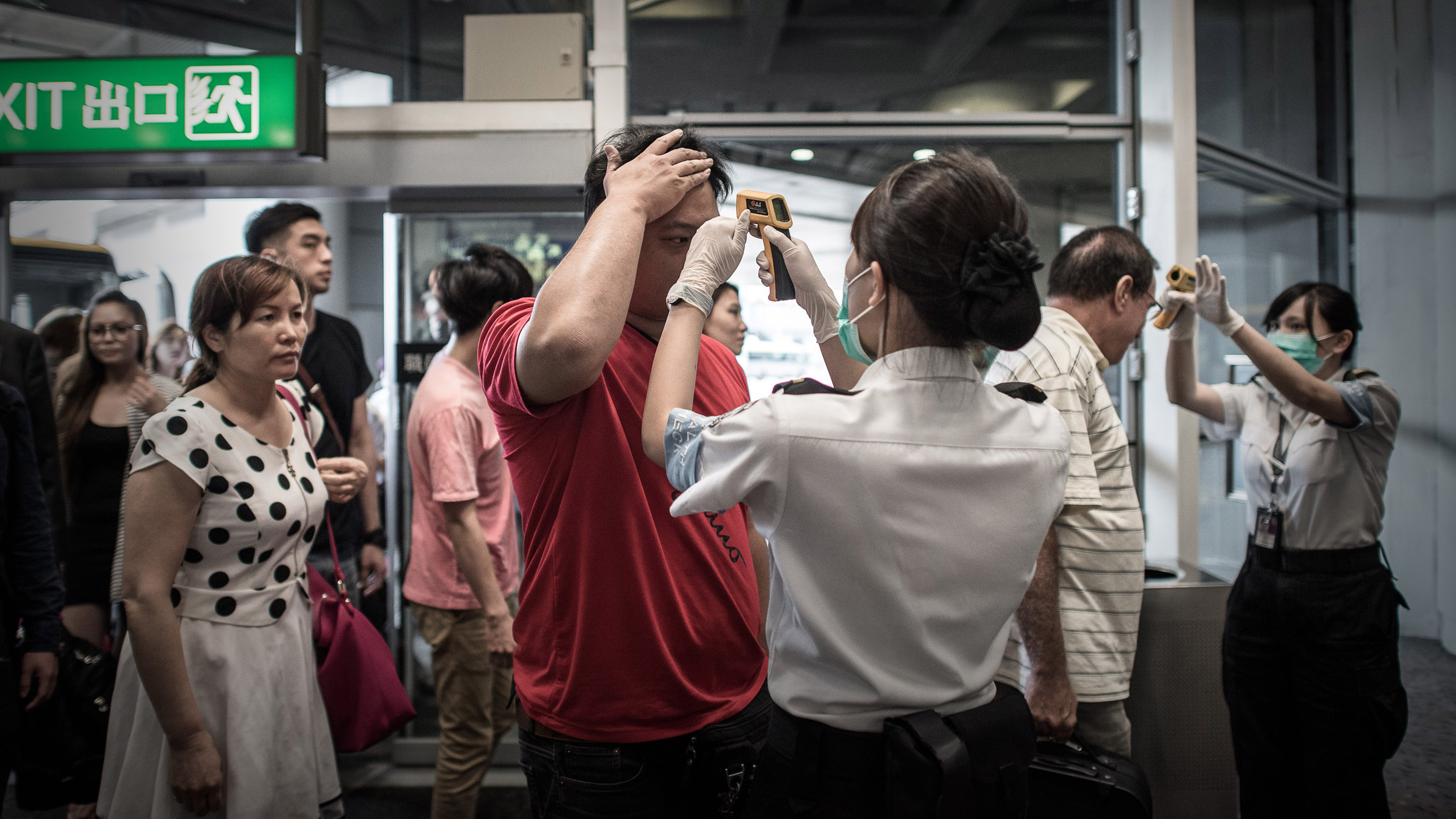US Officials Will Screen Travelers from China for New Virus
The screening will occur at three U.S. airports.

As an outbreak of a new virus in China spreads to other countries, U.S. officials announced that they will start screening passengers arriving from China at select U.S. airports for symptoms of the viral infection.
Starting today (Jan. 17), people traveling from the city of Wuhan — where the outbreak originated — to the United States, will undergo screening at three U.S. airports: San Francisco (SFO), New York (JFK) and Los Angeles (LAX), according to a statement from the Centers for Disease Control and Prevention (CDC).
These airports receive the "vast majority" of travelers from Wuhan, Dr. Martin Cetron, director of the CDC's Division of Global Migration and Quarantine, said in a news conference today. SFO and JFK are the only airports in the U.S. with direct flights from Wuhan; LAX receives indirect flights from Wuhan, he said.
Right now, "we believe the current risk from this virus to the general public [in the U.S.] is low," said Dr. Nancy Messonnier, director of the CDC's National Center for Immunization and Respiratory Diseases. But "we know it's crucial to be proactive and prepared," said Messonnier, who noted that the U.S. has previously experienced outbreaks of similar viruses, including the outbreaks of SARS (severe acute respiratory syndrome) in 2002 and MERS (Middle East respiratory syndrome) in 2012.
Related: 27 Devastating Infectious Diseases
So far, the virus — a new type of coronavirus — has sickened at least 45 people in Wuhan and has been linked to two deaths there, Messonnier said. Outside of China, the virus has been detected in two people traveling to Thailand and one person traveling to Japan.
As more countries are on alert for people with the virus, "I expect that we're going to see more cases," said Messonnier, who added that it's "highly possible" there will be a case in the United States. "That's why we're moving so quickly" with screening, she said.
Sign up for the Live Science daily newsletter now
Get the world’s most fascinating discoveries delivered straight to your inbox.
For the screening, officials will check people's body temperatures and ask questions about certain symptoms, Cetron said. Those who have a fever and other symptoms consistent with this viral infection will be further evaluated, and potentially tested for the new virus, known for now as 2019-nCoV.
Coronaviruses are a large family of viruses that cause respiratory illnesses, according to the CDC. This family includes the viruses that cause SARS and MERS, as well as those that cause milder illnesses, like the common cold.
Some coronaviruses infect animals, and in rare cases, they can jump from animals to humans, Messonnier said. In the current outbreak, most of those infected had either worked at or frequently visited a seafood and animal market in Wuhan, which does suggest that the virus spread from animals to people, she said. There is also evidence that under limited circumstances, the virus may spread between people.
With the Chinese New Year approaching, travel from Wuhan is higher now than at other times of the year, and the CDC expects to screen several thousands passengers across all three airports over the next few weeks, Cetron said.
- The 9 Deadliest Viruses on Earth
- 10 Deadly Diseases That Hopped Across Species
- 11 Surprising Facts About the Respiratory System
Originally published on Live Science.

Rachael is a Live Science contributor, and was a former channel editor and senior writer for Live Science between 2010 and 2022. She has a master's degree in journalism from New York University's Science, Health and Environmental Reporting Program. She also holds a B.S. in molecular biology and an M.S. in biology from the University of California, San Diego. Her work has appeared in Scienceline, The Washington Post and Scientific American.
Flu: Facts about seasonal influenza and bird flu
What is hantavirus? The rare but deadly respiratory illness spread by rodents










